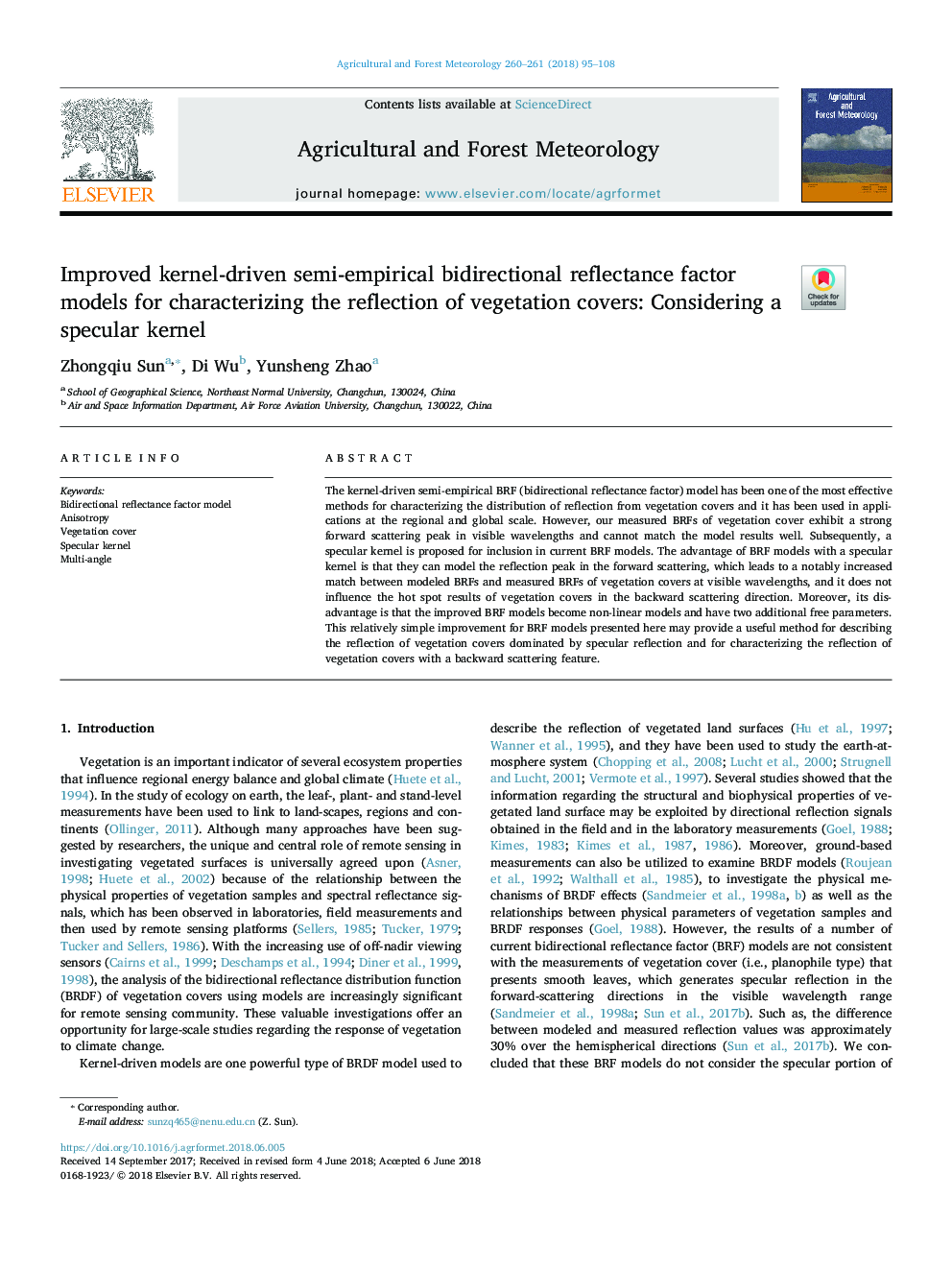| Article ID | Journal | Published Year | Pages | File Type |
|---|---|---|---|---|
| 6536605 | Agricultural and Forest Meteorology | 2018 | 14 Pages |
Abstract
The kernel-driven semi-empirical BRF (bidirectional reflectance factor) model has been one of the most effective methods for characterizing the distribution of reflection from vegetation covers and it has been used in applications at the regional and global scale. However, our measured BRFs of vegetation cover exhibit a strong forward scattering peak in visible wavelengths and cannot match the model results well. Subsequently, a specular kernel is proposed for inclusion in current BRF models. The advantage of BRF models with a specular kernel is that they can model the reflection peak in the forward scattering, which leads to a notably increased match between modeled BRFs and measured BRFs of vegetation covers at visible wavelengths, and it does not influence the hot spot results of vegetation covers in the backward scattering direction. Moreover, its disadvantage is that the improved BRF models become non-linear models and have two additional free parameters. This relatively simple improvement for BRF models presented here may provide a useful method for describing the reflection of vegetation covers dominated by specular reflection and for characterizing the reflection of vegetation covers with a backward scattering feature.
Related Topics
Physical Sciences and Engineering
Earth and Planetary Sciences
Atmospheric Science
Authors
Zhongqiu Sun, Di Wu, Yunsheng Zhao,
